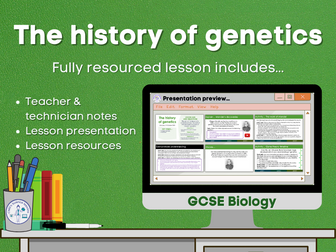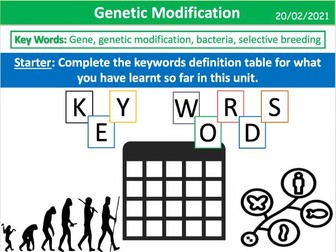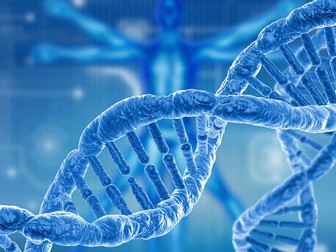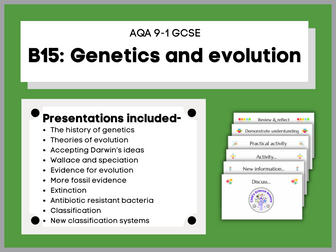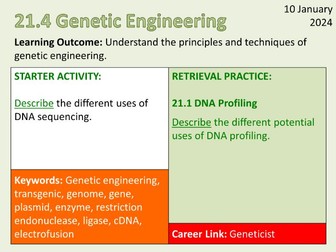
Genetic inheritance
During this fully resourced lesson on genetic inheritance GCSE students work through a variety of tasks to develop their understanding of how alleles determine an organisms characteristics.
This is the 7th lesson in a series of 10 and covers the content of -
AQA Spec Ref- 4.6.1.6 Genetic inheritance from B6 Reproduction unit.
AQA GCSE Biology OUP Scheme B13.7 Inheritance in action from B13 Reproduction chapter.
Aimed at a mixed ability class covering content 1-8.
Level 1: Low demand
Level 2: Standard demand
Level 3: High demand
Presentation contains (34 slides)-
Teacher and technician notes
Bell work activity
Clear lesson aims, objectives & success criteria
Information slides with differentiated content
Differentiated activities (group work)
Differentiated questions with answers for self-assessment
Student worksheets / handouts
This lesson is also available as a digital worksheet, which is ideal for absent students to catch-up missed work, distance learning, home schooling, or independent study.
Genetic inheritance
If you require more assistance, please contact me at-
cmgeducationresources@gmail.com
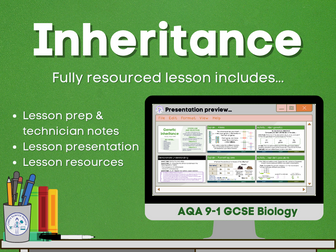
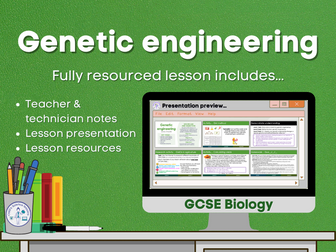
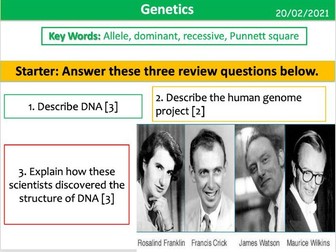


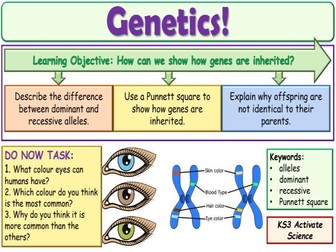

![Genetic Engineering [AQA NEW SPEC]](https://l.imgt.es/resource-preview-imgs/b5d762f1-e2ce-481a-9a2c-580d82572a44%2F0_76BuvhNKMrAOSLFH.crop_607x455_83%2C0.preview.jpg?profile=res-img-med-legacy-v2)





